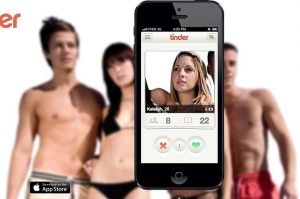Welcome to UBC Blogs. This is your first post. Edit or delete it, then start blogging!
Monthly Archives: February 2017
GRSJ Culture Jam Kini Tao
I recently joined the dating app “Tinder.” Before I joined myself, I was introduced to the app so to speak by one of my European friends. I got to “swipe” for a bit on her account in order to see what kinds of “options” there were out there. I immediately got the impression this must be an app used mostly by “white people.” I decided to look a bit more into what Tinder stands for and the ways in which this app upholds the status quo in our society, by promoting whiteness and heteronormativity.
This is the ad I chose for my Culture Jam Assignment.

This ad is just one of the many advertisements developed for the dating app “Tinder.” Much like Tinder’s “debut” advertising video, (which can be viewed here https://vimeo.com/84069532), this ad promotes both whiteness and heteronormativity as the “normal” in everyday life. The ad suggests that the woman on the screen fits perfectly within the background image which features three young, in shape, white, heterosexual individuals; otherwise known as the “traditional” or the “normal.” Considering that many people today use online dating apps to find friendships, sex and/or love, it is important to see how dating apps influence people’s impressions of what is desirable, good, “normal” and acceptable. For example, Tinder is a recent development. Before Tinder, one of the most famous apps was Grindr, but that technology is usually referred to with a mocking tone, as it does not promote heterosexual sex. Tinder on the other hand, has gained tremendous recognition and legitimacy because, research finds, it “targets heterosexual users and has garnered the participation of a large number of heterosexual female users” (Duguay, 2017, p. 352). Even though its main sponsors are Bacardi and Red Bull, which makes us think of random, drunken, party-all-night, meaningless hookups, Tinder is actually selling itself as a wholesome, perfectly acceptable way to meet heteronormative, upper class, affluent young people who are health-conscious and likely to be “safe” matches. By contrast, research attests, “older, gender-variant, homosexual, low socio-economic status, and rural-dwelling people are absent from Tinder” (Duguay, 2017, p. 358). Also absent from Tinder is the option of users to select a gender other than the binary male and female. This ad is a typical promotion of the status quo in which people who look alike are considered to belong together and technology is used to enforce this paradigm.
Deconstructed AD

My deconstructed ad tries to showcase all the misinformation that goes on when trying to sell a product such as a dating app. The chart shows the world’s population and the very small portion of Europeans by contrast with their over-representation in this ad. The deconstruction also points at the “Truth” about dating apps, including that what you see is a stereotypical portrayal of normalcy, and that appearances are deceiving and sometimes that we perceive as “white” is not white at all.
Duguay (2017) finds that “Tinder’s marketing approach not only intimates that users will be normatively attractive, it also taps into perceptions of normative identities as being safe” (p. 358). This, I find, is the biggest problem in today’s promotion of “ideals.” By setting some people as the “norm” we are automatically identifying a different, and possibly dangerous “other” who does not fit our image of the world. My deconstruction aims at showing the TRUTH about the makeup of the world, and the ways in which advertising campaigns reduce our thinking to narrow, short-sighted, simplistic understandings of dating rules, realities and expectations. For example, only a very small portion of the world is “white” and/or of European descent. People must understand that the reality is we live in a global, integrated, multicultural and multi-sexual world, in which normativity is actually an oxymoron. What is more, even when people “look” white, or European, they might not actually be of European background. I replaced the picture in the phone image with that of Jessica Deer, a Mohawk Kahnawake woman from outside Montreal. Her looks surely “don’t match First Nations stereotypes” (North, 2015). The deconstructed ad is trying to point to assumptions people make, but also to the stereotypical ideas of dating, and regulating who belongs where and with whom that apps like Tinder resorts to in order to make their product sellable. By promoting these ideas, Tinder is not just selling a product but selling a way of life which is racist, sexist, homophobic and ultimately unrealistic.
References
CBC News. (2015, July 27). First nations woman exposes Tinder racism on Twitter. Retrieved from http://www.cbc.ca/news/canada/british-columbia/first-nations- woman-exposes-tinder-racism-on-twitter-1.3169538
Duguay, S. (2017). Dressing up Tinderella: Interrogating authenticity claims on the mobile dating app Tinder. Information, Communication & Society, 20(3), 351-347.